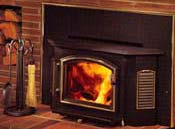OTHER SERVICES
WE OFFER

BROOKLYN
SERVICE AREAS
CHIMNEY
FACTS


We do more than just chimney cleaning!
We service all of Brooklyn, Queens, New York City and Long Island, NY!
Questions and answers about your chimney!
How often should I have my chimney cleaned?
My fireplace stinks, especially in the summer. What can I do?
When I build a fire in my upstairs fireplace, I get smoke from the basement fireplace
I heat with gas. Should this chimney be checked too?
What is creosote?
What is a chimney liner?
My masonry chimney is in bad shape; can I still install a chimney liner in it?
Why use a chimney liner?
How does a chimney Liner protect my Chimney?
Why is moisture bad for the inside of a Chimney?
When is a Stainless Steel Chimney Liner used vs an Aluminum Chimney Liner?
Q. How often should I have my chimney cleaned?
This a tougher question than it sounds. The simple answer is: The National Fire Protection Association Standard 211 says, "Chimneys, fireplaces, and vents shall be inspected at least once a year for soundness, freedom from deposits, and correct clearances. Cleaning, maintenance, and repairs shall be done if necessary." This is the national safety standard and is the correct way to approach the problem. It takes into account the fact that even if you don't use your chimney much, animals may build nests in the flue or there may be other types of deterioration that could make the chimney unsafe to use. The Chimney Safety Institute of America recommends that open masonry fireplaces should be cleaned at 1/8" of sooty buildup, and sooner if there is any glaze present in the system. Factory-built fireplaces should be cleaned when any appreciable buildup occurs. This is considered to be enough fuel buildup to cause a chimney fire capable of damaging the chimney or spreading to the home
Q. My fireplace stinks, especially in the summer. What can I do?
The smell is due to creosote deposits in the chimney, a natural byproduct of woodburning. The odor is usually worse in the summer when the humidity is high and the air conditioner is turned on. A good cleaning will help but usually won't solve the problem completely. There are commercial chimney deodorants that work pretty well, and many people have good results with baking soda or even kitty litter set in the fireplace. The real problem is the air being drawn down the chimney, a symptom of overall pressure problems in the house. Some make-up air should be introduced somewhere else in the house. A tight sealing, top mounted damper will also reduce this air flow coming down the chimney.
Q. When I build a fire in my upstairs fireplace, I get smoke from the basement fireplace.
This has become quite a common problem in modern air tight houses where weather-proofing has sealed up the usual air infiltration routes. The fireplace in use exhausts household air until a negative pressure situation exists. If the house is fairly tight, the simplest route for makeup air to enter the structure is often the unused fireplace chimney. As air is drawn down this unused flue, it picks up smoke that is exiting nearby from the fireplace in use and delivers the smoke to the living area. The best solution is to provide makeup air to the house so the negative pressure problem no longer exists, thus eliminating not only the smoke problem, but also the potential for carbon monoxide to be drawn back down the furnace chimney. A secondary solution is to install a top mount damper on the fireplace that is used the least.
Q. I heat with gas. Should this chimney be checked too?
Without a doubt! Although gas is generally a clean burning fuel, the chimney can become non-functional from bird nests or other debris blocking the flue. Modern furnaces can also cause many problems with the average flues intended to vent the older generation of furnaces. We suggest you check the areas on gas and carbon monoxide for more information.
Q: What is creosote?
Inside your chimney, creosote builds up from every fire that you burn. After a while, that creosote can build up so much that it can catch fire up inside that chimney. If that happens, your whole house can burn down. To prevent chimney fires, have your chimney cleaned professionally every year. In addition to cleaning out the creosote your chimney sweep, we will inspect your fireplace and chimney for safety concerns.
Q: What is a chimney liner?
New Appliances installed today yield higher efficiencies than yesterday's technology. This helps you save by increasing the amount of usable heat for your home generated by each BTU of fuel you burn. Higher efficiencies effectively help you "send less money up-the chimney". However, because more heat is used by the home, there is less heat in the exhaust gases vented to the outside. If not vented properly, these lower temperature exhaust gases can lead to excessive moisture in your chimney (or not vent at all!).
Q: My masonry chimney is in bad shape; can I still install a chimney liner in it?
Prior to installing a liner in your masonry chimney, make sure the masonry chimney is in sound condition, clean and free from all loose and potentially flammable debris. If you find any cracked, loose or missing bricks or tiles, have them replaced. If in doubt, contact a professional chimney sweep and/or a qualified heating system technician for a thorough inspection.
Q: Why use a chimney liner?
The most important reasons for using a chimney liner would be to correct problems with an existing masonry chimney that has become unsafe due to deterioration, moisture damage or eroded mortar joints. Another reason is to improve the efficiency of the appliance by reducing the existing chimney to the correct flue size to match the appliance it serves. By doing so, you will be improving the draft, reducing fuel consumption and ensuring consistent operation.
Q: How does a chimney Liner protect my Chimney?
Flexible Chimney Liners have two primary ways of protecting your chimney:
a. the Flex Liner contains the vent gases which can react with moisture to damage the inside of your chimney.
b. Flex Liners reduce the size of the chimney opening, so they require less heat to effectively exhaust the fumes and prevent moisture build up.
Q: Why is moisture bad for the inside of a Chimney?
Moisture, over time, will cause corrosion and decay or bricks, mortar and clay liners. How? Moisture reacts with the exhaust gases to form acids which "eat away" at your chimney. Also, moisture collects into cracks and can seep into bricks and mortar. In cold climates, the moisture freezes, expands, then thaws, causing chunks of your chimney to break loose and crumble. Finally, moisture can actually drip back into your Appliance, causing it to rust or corrode.
Q: When is a Stainless Steel Chimney Liner used vs an Aluminum Chimney Liner?
Stainless Steel Chimney Liners are listed for use with Oil and Wood burning appliances. Aluminum is used in Gas installations, where flue temperatures are much lower and corrosive gases are much less.
Boiler Repairs Brooklyn | Boiler Repair Queens | Boiler Repair Service Queens | Boiler Repair Service Brooklyn | Boiler Repairs Queens | Brooklyn Boiler Repair Service | Queens Boiler Repair Service | Boiler Installation Queens | Boiler Installation Brooklyn | Residential Boiler Installation Brooklyn | Residential Boiler Installation Queens | Chimney Installation Queens | Chimney Installation Brooklyn | Chimney Repairs Brooklyn | Chimney Repair Queens | Chimney Cleaning Queens | Chimney Cleaning Brooklyn | Boiler Parts Queens | Boiler Parts Brooklyn | Brooklyn Heating | Boiler Heating Repairs | Boiler Heating Service | Brooklyn Boiler Removal | Brooklyn Oil to Gas Conversion | Brooklyn National Grid | Brooklyn Keyspan
